Worm dissection diagram
Worm Dissection Diagram. Place the specimen on the fingers of your left hand. Part ii dissection. Insert the scissors into the opening and cut in a straight line all the way up through the mouth. Find the clitellum of your worm.
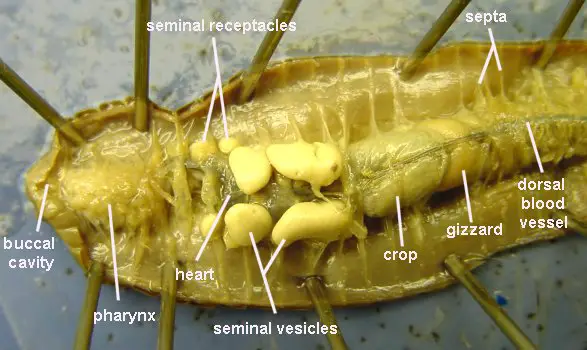 Earthworm Anatomy And Dissection Guide Biology Junction From biologyjunction.com
Earthworm Anatomy And Dissection Guide Biology Junction From biologyjunction.com
Segments of ody rings around body body is segmented 3. Turn the worm ventral side up as shown in the earthworm anatomy diagram below. Each segment of a worm has small pairs of bristles called setae which help it move. Find the anus of your worm. Insert the tip of one of the blades of a pair of fine scissors through the skin above the dorsal blood vessel at about 30th segment of the body. Place the specimen on the fingers of your left hand.
Lay the worm on your dissecting tray with its dorsal side facing up.
Lift up the skin with a pair of forceps and snip an opening with a pair of dissecting scissors. Mouth takes in food from soil 2. Insert the tip of one of the blades of a pair of fine scissors through the skin above the dorsal blood vessel at about 30th segment of the body. Identify the dorsal side which is the worm s rounded top and the ventral side which is its flattened bottom. Turn the worm ventral side up as shown in the earthworm anatomy diagram below. Start your dissection about an inch posterior to the clitellum.
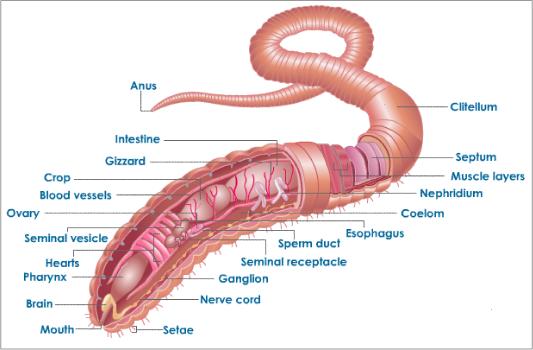 Source: andrewgarfields.blogspot.com
Source: andrewgarfields.blogspot.com
Pharynx throat passes food from mouth to esophagus 4. Insert the scissors into the opening and cut in a straight line all the way up through the mouth. Segments of ody rings around body body is segmented 3. Lay the worm on your dissecting tray with its dorsal side facing up. Find the anus of your worm.
 Source: biologyjunction.com
Source: biologyjunction.com
Find the anus of your worm. Lift up the skin with a pair of forceps and snip an opening with a pair of dissecting scissors. Find the clitellum of your worm. Pharynx throat passes food from mouth to esophagus 4. Run your fingers up and down the ventral side of the worm to feel the bristles.
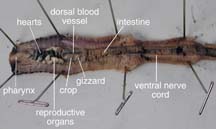 Source: learning-center.homesciencetools.com
Source: learning-center.homesciencetools.com
Find the clitellum of your worm. This is the. Insert the tip of one of the blades of a pair of fine scissors through the skin above the dorsal blood vessel at about 30th segment of the body. Use dissection pins to secure each end on the tray. Turn the worm ventral side up as shown in the earthworm anatomy diagram below.
 Source: schoolworkhelper.net
Source: schoolworkhelper.net
Insert the tip of one of the blades of a pair of fine scissors through the skin above the dorsal blood vessel at about 30th segment of the body. Find the anus of your worm. Turn the worm ventral side up as shown in the earthworm anatomy diagram below. Part ii dissection. Use dissection pins to secure each end on the tray.
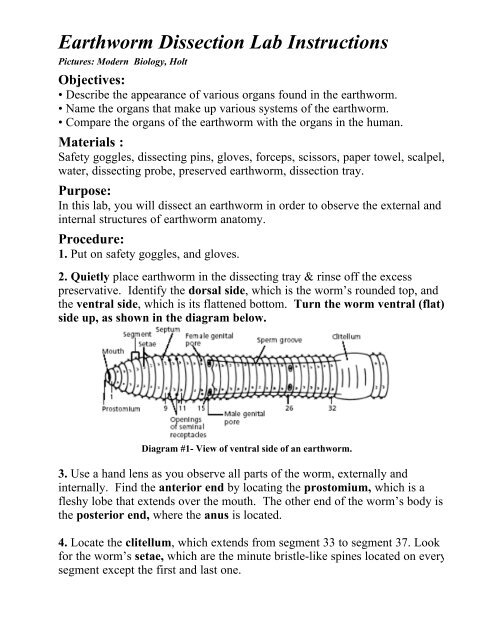 Source: yumpu.com
Source: yumpu.com
Turn the worm ventral side up as shown in the earthworm anatomy diagram below. Pharynx throat passes food from mouth to esophagus 4. This is the. Each segment of a worm has small pairs of bristles called setae which help it move. Use dissection pins to secure each end on the tray.

Run your fingers up and down the ventral side of the worm to feel the bristles. Insert the tip of one of the blades of a pair of fine scissors through the skin above the dorsal blood vessel at about 30th segment of the body. Part ii dissection. Place the specimen on the fingers of your left hand. Find the anus of your worm.
 Source: chegg.com
Source: chegg.com
Turn the worm ventral side up as shown in the earthworm anatomy diagram below. Hold the scissors almost in a horizontal position keeping the lower arm just below the body wall and cut the skin anteriorly for about 2 cm. Start your dissection about an inch posterior to the clitellum. Each segment of a worm has small pairs of bristles called setae which help it move. Segments of ody rings around body body is segmented 3.

Identify the dorsal side which is the worm s rounded top and the ventral side which is its flattened bottom. Part ii dissection. Insert the scissors into the opening and cut in a straight line all the way up through the mouth. Use dissection pins to secure each end on the tray. Start your dissection about an inch posterior to the clitellum.
 Source: researchgate.net
Source: researchgate.net
Identify the dorsal side which is the worm s rounded top and the ventral side which is its flattened bottom. Pharynx throat passes food from mouth to esophagus 4. Use dissection pins to secure each end on the tray. Find the anus of your worm. Each segment of a worm has small pairs of bristles called setae which help it move.
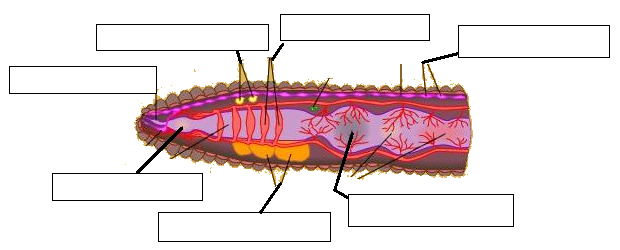 Source: biologycorner.com
Source: biologycorner.com
This is the. Insert the scissors into the opening and cut in a straight line all the way up through the mouth. Note the swelling of the earthworm near its anterior side. Each segment of a worm has small pairs of bristles called setae which help it move. Part ii dissection.
 Source: pinterest.com
Source: pinterest.com
Insert the scissors into the opening and cut in a straight line all the way up through the mouth. Segments of ody rings around body body is segmented 3. Each segment of a worm has small pairs of bristles called setae which help it move. Mouth takes in food from soil 2. Find the clitellum of your worm.
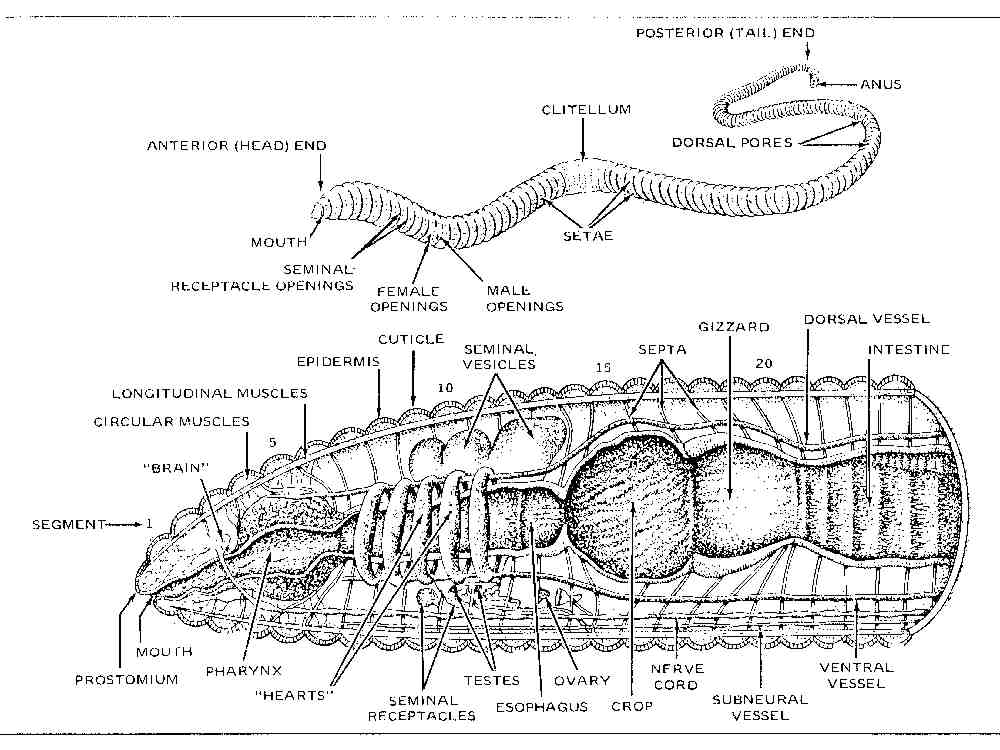 Source: activediagram.argiso.it
Source: activediagram.argiso.it
Find the clitellum of your worm. Pharynx throat passes food from mouth to esophagus 4. Turn the worm ventral side up as shown in the earthworm anatomy diagram below. Run your fingers up and down the ventral side of the worm to feel the bristles. Start your dissection about an inch posterior to the clitellum.
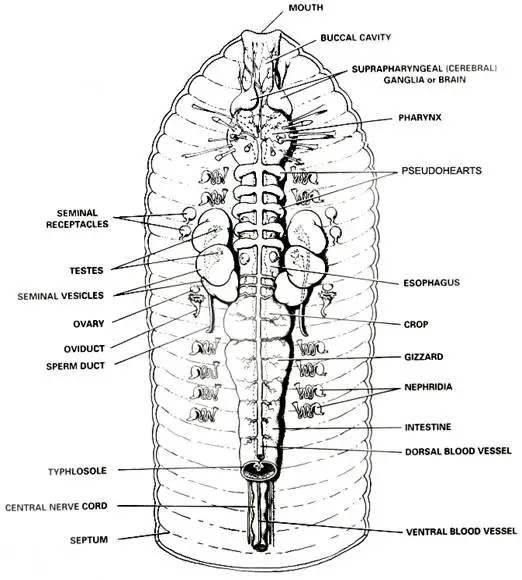 Source: biologyjunction.com
Source: biologyjunction.com
Use dissection pins to secure each end on the tray. Place earthworm in the dissecting tray rinse off the excess preservative. Pharynx throat passes food from mouth to esophagus 4. This is the. Turn the worm ventral side up as shown in the earthworm anatomy diagram below.
 Source: pinterest.com
Source: pinterest.com
Place the specimen on the fingers of your left hand. Insert the scissors into the opening and cut in a straight line all the way up through the mouth. Insert the tip of one of the blades of a pair of fine scissors through the skin above the dorsal blood vessel at about 30th segment of the body. Run your fingers up and down the ventral side of the worm to feel the bristles. Hold the scissors almost in a horizontal position keeping the lower arm just below the body wall and cut the skin anteriorly for about 2 cm.
 Source: biologyjunction.com
Source: biologyjunction.com
Lay the worm on your dissecting tray with its dorsal side facing up. Segments of ody rings around body body is segmented 3. Identify the dorsal side which is the worm s rounded top and the ventral side which is its flattened bottom. Find the anus of your worm. Lift up the skin with a pair of forceps and snip an opening with a pair of dissecting scissors.
If you find this site beneficial, please support us by sharing this posts to your own social media accounts like Facebook, Instagram and so on or you can also bookmark this blog page with the title worm dissection diagram by using Ctrl + D for devices a laptop with a Windows operating system or Command + D for laptops with an Apple operating system. If you use a smartphone, you can also use the drawer menu of the browser you are using. Whether it’s a Windows, Mac, iOS or Android operating system, you will still be able to bookmark this website.





